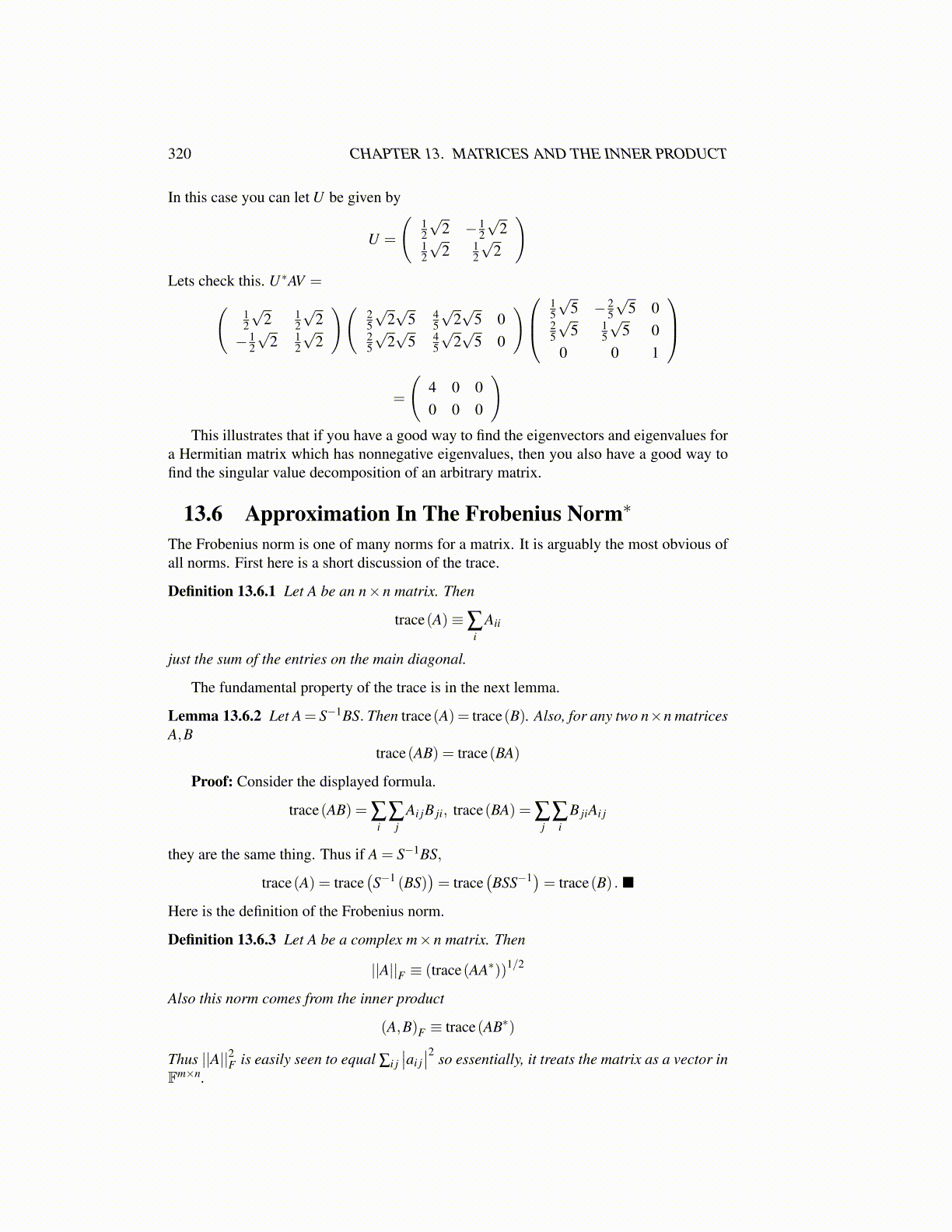
320 CHAPTER 13. MATRICES AND THE INNER PRODUCT
In this case you can let U be given by
U =
(12
√2 − 1
2
√2
12
√2 1
2
√2
)Lets check this. U∗AV =(
12
√2 1
2
√2
− 12
√2 1
2
√2
)(25
√2√
5 45
√2√
5 025
√2√
5 45
√2√
5 0
)15
√5 − 2
5
√5 0
25
√5 1
5
√5 0
0 0 1
=
(4 0 00 0 0
)This illustrates that if you have a good way to find the eigenvectors and eigenvalues for
a Hermitian matrix which has nonnegative eigenvalues, then you also have a good way tofind the singular value decomposition of an arbitrary matrix.
13.6 Approximation In The Frobenius Norm∗
The Frobenius norm is one of many norms for a matrix. It is arguably the most obvious ofall norms. First here is a short discussion of the trace.
Definition 13.6.1 Let A be an n×n matrix. Then
trace(A)≡∑i
Aii
just the sum of the entries on the main diagonal.
The fundamental property of the trace is in the next lemma.
Lemma 13.6.2 Let A= S−1BS. Then trace(A) = trace(B). Also, for any two n×n matricesA,B
trace(AB) = trace(BA)
Proof: Consider the displayed formula.
trace(AB) = ∑i
∑j
Ai jB ji, trace(BA) = ∑j∑
iB jiAi j
they are the same thing. Thus if A = S−1BS,
trace(A) = trace(S−1 (BS)
)= trace
(BSS−1)= trace(B) . ■
Here is the definition of the Frobenius norm.
Definition 13.6.3 Let A be a complex m×n matrix. Then
||A||F ≡ (trace(AA∗))1/2
Also this norm comes from the inner product
(A,B)F ≡ trace(AB∗)
Thus ||A||2F is easily seen to equal ∑i j∣∣ai j∣∣2 so essentially, it treats the matrix as a vector in
Fm×n.